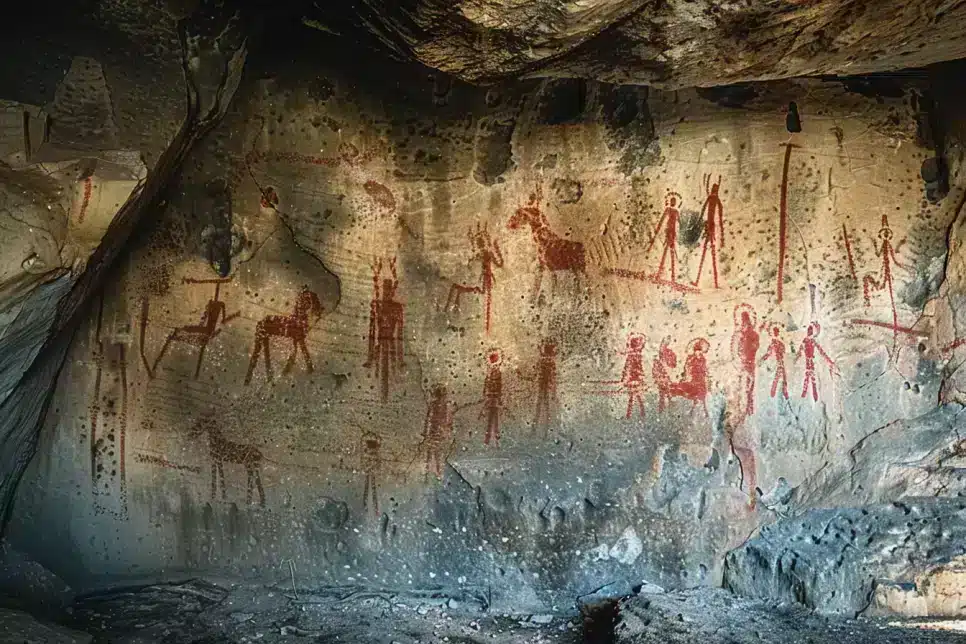In a groundbreaking discovery, archaeologists have unearthed what are now considered the earliest known cave paintings in South America. Located in the remote Argentine Patagonia, these ancient artworks date back 8,200 years, offering a vivid glimpse into the prehistoric mind. The findings, detailed in the Science Advances journal, were made in the Huenul 1 cave, a significant archaeological site spanning 630 square meters (6,781 square feet) in the province of Neuquen, situated approximately 1,100 kilometers (684 miles) southwest of Buenos Aires. This remarkable discovery was made possible through the collaborative efforts of Argentine and Chilean archaeologists, who uncovered 895 paintings that showcase the artistic and communicative endeavors of early human societies in the region.
Dr. Guadalupe Romero Villanueva, the leading research author, expressed the significance of this finding by stating, “We were able to date four black peniform patterns that were drawn in charcoal. These proved to be the earliest direct dating of cave paintings in South America.” The discovery not only pushes back the timeline of artistic expression in the region but also highlights the sustained cultural practices over millennia. According to Villanueva, “the production of cave art began in the Huenul cave about 8,000 years ago,” with the practice of painting specific patterns enduring for at least 3,000 years.
The paintings testify to the artistic capabilities and cultural transmission among hunter-gatherer societies of the middle Holocene, which spans roughly 7,000 to 5,000 years ago. Furthermore, they underscore the socioecological resilience and the means of communication between scattered populations in the face of climatic adversities. “We believe these images, in particular, were part of a resilient response of the mobile hunter-gatherer groups that occupied this cave and the desert environments of northern Patagonia to the climatic challenge of a period of extreme dryness that occurred during the middle Holocene,” Villanueva elaborates, highlighting the dual purpose of these ancient artworks as both creative expression and survival mechanism.
The implications of this discovery are vast. It suggests that other sites in South America, like the Cueva de las Manos, could harbor older cave paintings, albeit currently only relatively dated. Villanueva’s findings challenge our understanding of prehistoric life in South America and open new avenues for exploring the origins and evolution of human artistic expression across the continent.
As we stand on the brink of unraveling more secrets from the past, this discovery invites us to contemplate the rich tapestry of human history and the enduring power of art as a window into the lives of our ancient ancestors. Through these ancient markings, we glimpse the shared humanity of a long time, reminding us of our continuous quest for expression and connection.



